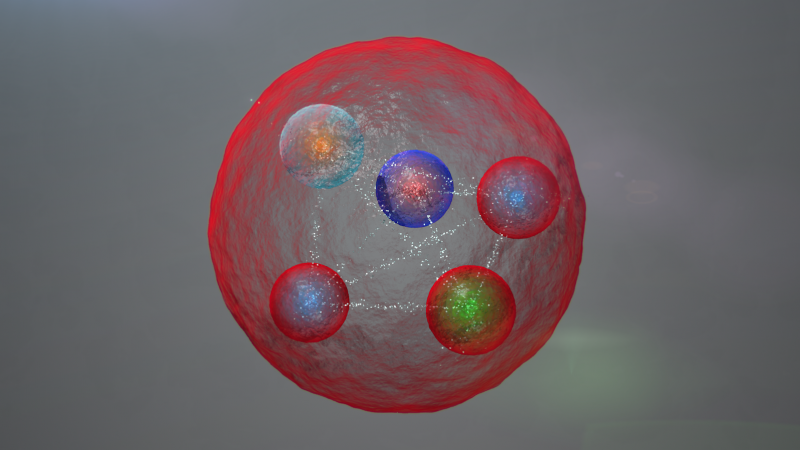Ten days after the three-year anniversary of CERN's discovery of the Higgs boson, researchers on the LHCb experiment at CERN have announced that another discovery has been made: They have found a new exotic class of particles.
The team has submitted their findings to the journal Physical Review Letters for reviewal.
These particles are called "pentaquarks," and they offer some interesting insights regarding the nature of, well, nature. Typically, we find that composite particles consist of three quarks. The proton, for example, is composed of three valence quarks: Two up quarks and a down quark. But in 1964, American physicist Murray Gell-Mann revolutionized our understanding of matter by proposing that baryons and mesons are comprised of quark and antiquark pairs. In essence, Gell-Mann's quark model allows, in principle, for particles to be made of up to five quarks (hence the prefix, "penta-").
Pentaquarks are seasoned subatomic celebrities, having had a few moments in the spotlight due to several false alarm "discoveries."
Researchers at the SPring-8 synchrotron in Harima, Japan claimed to have found a pentaquark in 2002, with several other labs claiming to have found evidence for the pentaquark as well. Because of this, it would be understandable if one was skeptical of CERN's claims - even CERN was skeptical when the bump first appeared in their data, which prompted researchers to check the data in every way they could.
However, the method by which LHCb experimenters accumulated their data is different from other teams - and more reliable, to boot!
While the researchers at the SPring-8 synchrotron gathered data from photon-neutrino collisions, LHCb researchers measured the decay of a baryon called $latex Lambda _b$ into three other particles: A $latex J/ Psi$ , a proton, and a kaon. In studying the varying masses of the $latex Lambda _b$ particles and protons, researchers found that there were intermediate phases in the production of these particles.
When speaking on these intermediate phases, LHCb physicist Tomasz Skwarnicki had this to say:
“Benefitting from the large data set provided by the LHC, and the excellent precision of our detector, we have examined all possibilities for these signals, and conclude that they can only be explained by pentaquark. More precisely the states must be formed of two up quarks, one down quark, one charm quark and one anti-charm quark."
While the discovery of the pentaquark may not be prompting the same global excitement as that of the Higgs boson (or even the recent Pluto flyby conducted by New Horizons), high hopes and elation are present in the physics community. MIT's Frank Wilczek, who received the Nobel Prize in Physics in 2004 for his work in Quantum Chromodynamics (QCD) - the study of the interactions of quarks and gluons - shared his excitement by the findings as well as his hopes for the future of the field by saying, "it is about the most exciting discovery in QCD I could imagine," adding that there is now room for rapid growth in the field, "it is like a phoenix rising from the ashes."
Share This Article
